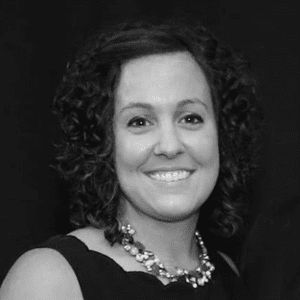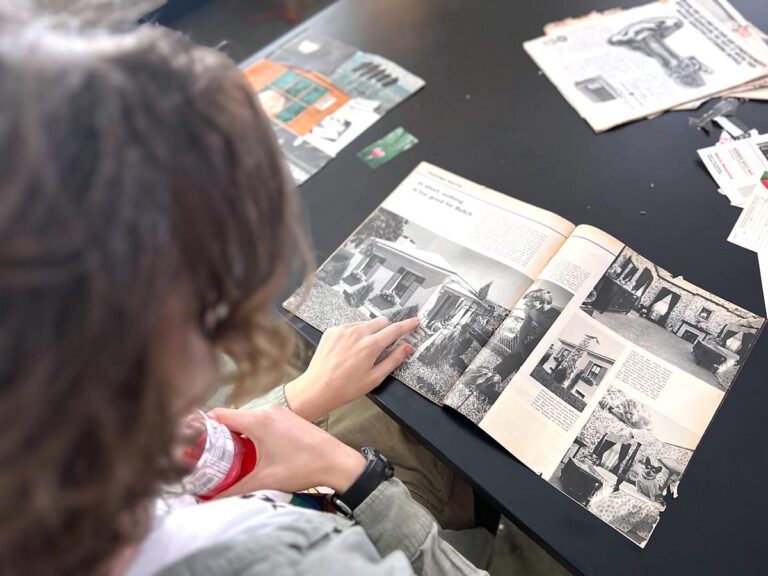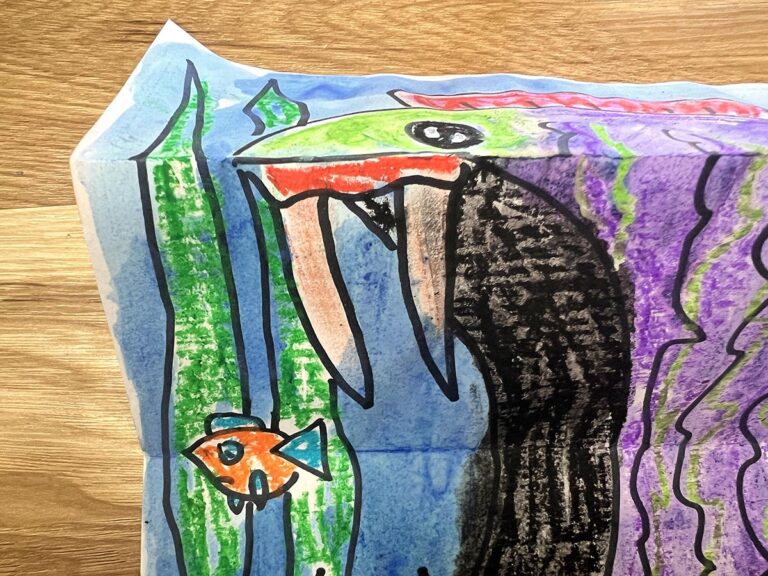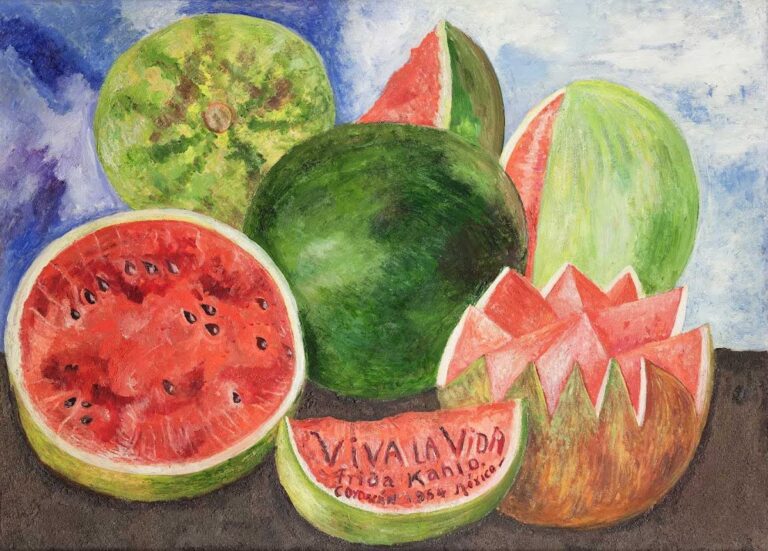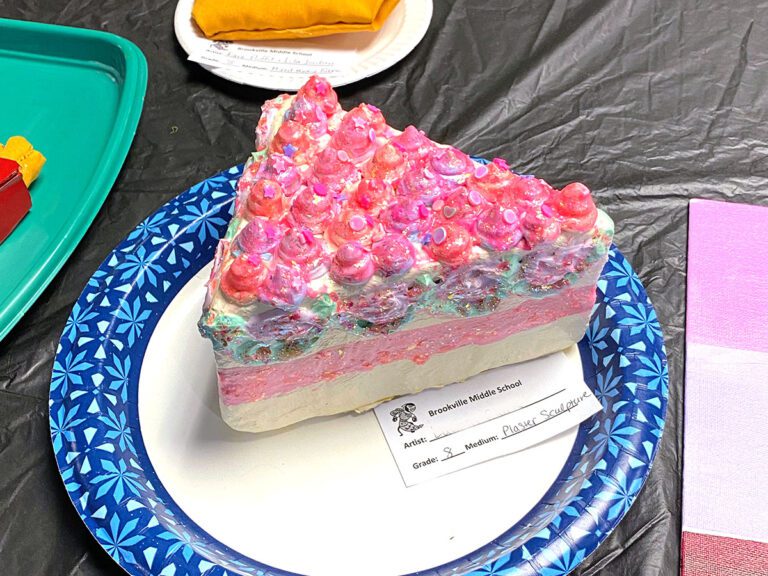I’m glad you asked!
Many art educators teach in what we call ‘traditional’ art education roles at public or private K-12 schools. But there are definitely art teachers out there who teach art in nontraditional and creative schools. It’s fascinating to learn from them and see how ‘the other side lives.’

Today I am bringing you the story of Kara Dare, a Montessori art teacher at Midwest Public Montessori school, who serves students from age 3 through grade 8. She sees all classes twice per week for 40 minutes.
Kara got into this job by chance. Her traditional art position went part-time, so she picked up 30% of her time at the Montessori school. As the Montessori position became full-time, she didn’t look back! Kara mentioned that the community aspect was a major deciding factor. Kara stated, “In the 3 years that I have been here full-time, the school has grown as a community. It has become the community that I was missing. I grew up in a small town with a graduating class of 28. I felt lost in the school district that had more students than the entire population of the town I grew up in.”
What’s different about teaching at a Montessori school?
Although art is still considered a ‘special‘ for students Kindergarten and above, when you walk into Kara’s art room you will see many influences from the traditional Montessori method that may be different from your mainstream art room.
1. Community
The parents are highly involved in her art program. Kara explained, “We held our first Fine Arts Day this past school year with 25 different presenters. All of our presenters were affiliated with the school and volunteered their time. Our parent support is amazing!” Kara also is fortunate to work with her own children, who attend her school. “Seeing them daily is a major benefit and very common at Montessori schools,” Kara noted.
2. Age Grouping
Teaching multi-age classes is something Kara noticed a difference with right away. Although 3’s and 4’s don’t come to art, they are learning many fine motor skills and art concepts in their classrooms, which really benefit the students when they enter art at the pre-kindergarten level. Her grade levels are combined as follows:
- Pre-Kindergarten and Kindergarten is Pre-Primary
- 1st-3rd is Lower Elementary
- 4th-6th is Upper Elementary
- 7th-8th is Middle School
This grouping allows the older children to work directly with the younger children. Everyone learns from each other and skills are advanced quickly, especially with the younger students.
3. More Choice
Students in a traditional Montessori classroom are able to choose their work and duration of that work. Work is laid out specifically in a developmentally appropriate order so students can move through skills. Kara has emulated this in her own art curriculum.
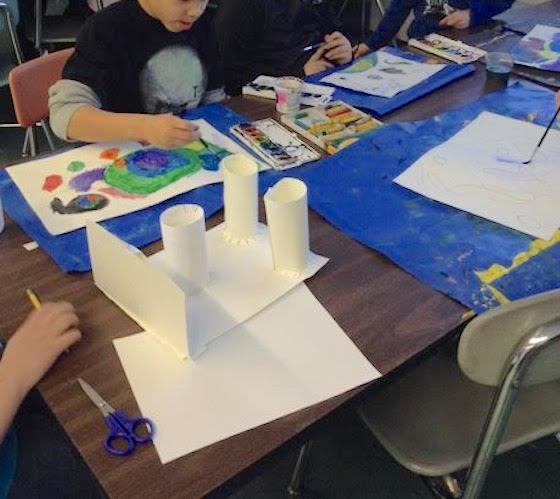
What Does the Curriculum Look Like?
Kara attempted to research “Montessori Art Curriculum” in her first years at the school but came up short. Many Montessori schools offer art as a supplement to their classroom work, not as a subject unto itself, so no one could really help her. Finally, she ran across an article for Choice-Based Art. Kara explained, “I took it to a Montessori teacher. She read the article and said, “This sounds like Montessori.” I took it to the principal and said, “I want to try this.” He said, “You know what is good for your class, go ahead.”
Kara said, “The main piece of the philosophy that I have added to my curriculum is “choice within boundaries,” which I refined while taking The Art of Education’s Choice Based Art Education Class. The class confirmed that I had made the right choice for my students and gave me more examples to implement.”
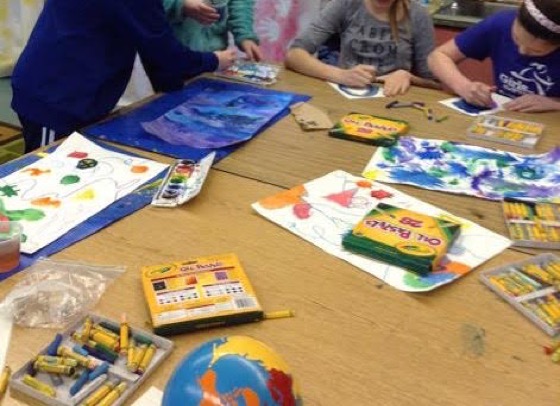
Care of and responsibility for materials are also a huge part of the curriculum. In Kara’s class, students retrieve their own work materials and restore the space at the end of the class. These responsibilities are hallmarks of a Montessori classroom. She also uses the language of a complete work cycle directly from the Montessori methods. An artwork is not complete until it has an artist statement card, is uploaded to Artsonia, and is filed away properly.
Kara also noted, “This year, we began giving our Middle School students more choice about their art and music classes. I taught Collaborative Art where students did group projects and helped the community in some way. This set up a successful environment because all of my students wanted to be in my classroom, which was nice.”
Kara’s journey is a great lesson for all of us. We have the power to control our situation, even if we don’t teach at a non-traditional school. You are the CEO of your curriculum, and Kara has demonstrated this idea well. Thank you to Kara for letting us peek into her classroom and learn more about what it’s really like to teach art at a Montessori school.
Kara summarized her journey by saying, “It was by chance that I landed here. It is my belief that Montessori is an amazing way for young people to grow into adults that keeps me here.”
Have you taught in a Montessori or other non-traditional school setting? What was your experience?
Does anyone have any great tips for teaching multi-age classes?
Magazine articles and podcasts are opinions of professional education contributors and do not necessarily represent the position of the Art of Education University (AOEU) or its academic offerings. Contributors use terms in the way they are most often talked about in the scope of their educational experiences.
